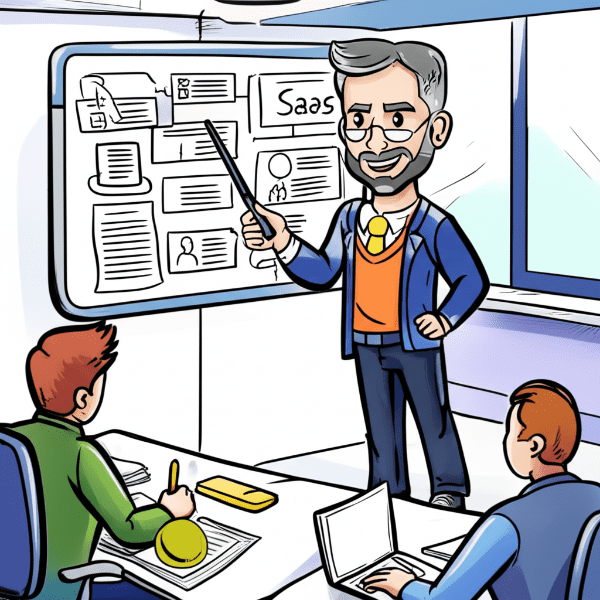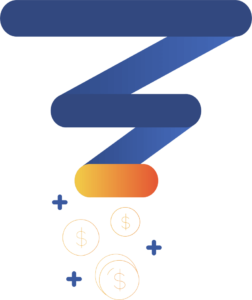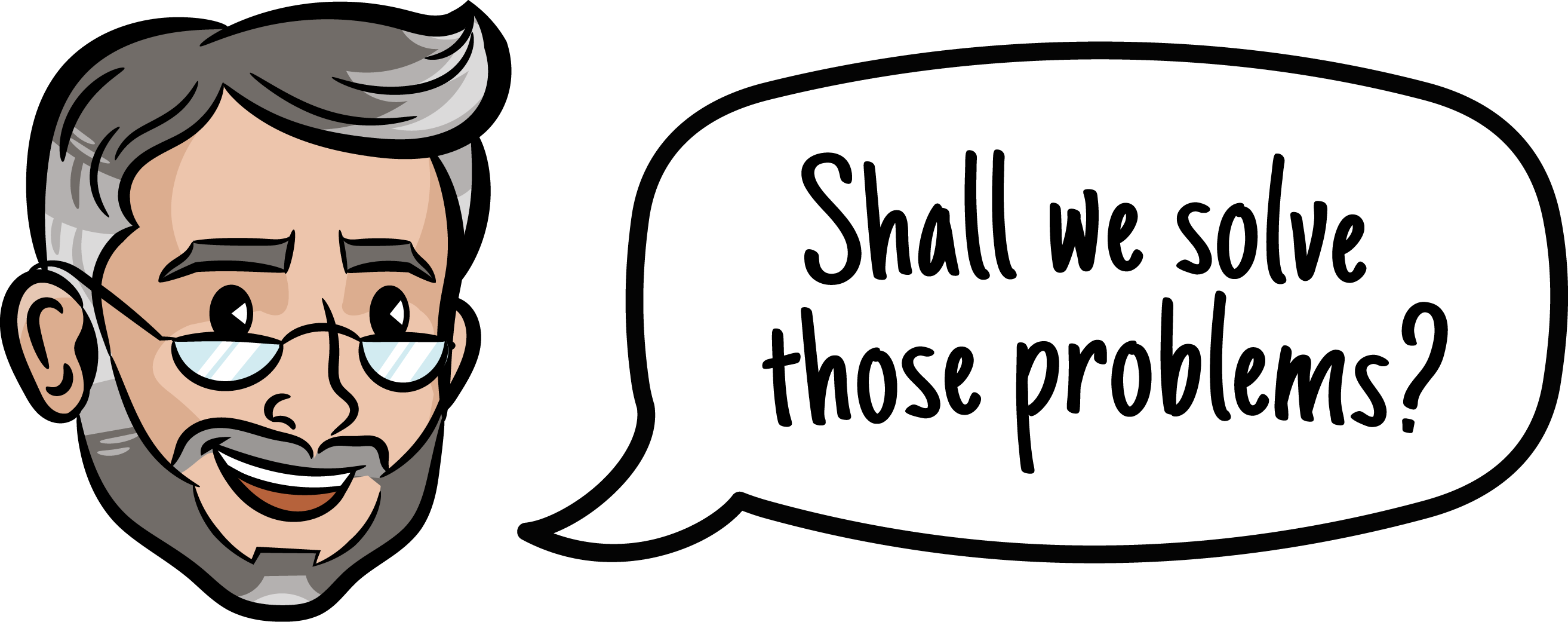Table of Contents
Preparing for Your Software Sales Pitch
Tip #1: Stop Calling It a Demo
Tip #2: Early Is On Time
Tip #3: Have Your Tabs Open Prior to the Call
Your Software Pitching
Tip #4: Let Your Prospect Set the Agenda
Tip #5: Don’t Fill the Allotted Time
Tip #6: Use Section Openers, Closers, and Pauses to Break Up Your Software Sales Pitch
Tip #7: Don’t Cover Every Feature
Tip #8: I Don’t Know but I’ll Get Back to You Is Acceptable (If You Actually Will)
Your Close
Tip #9: View Your Job as to Help Make a Wise Decision Not “Close the Business”
Tip #10: Ask for the Close & Set the Next Steps
Showing people new software can be a lot of fun, but it can also be challenging as many global clients who have asked us to be their sales funnel consultant can attest.
If you’re in-person or doing a Zoom/Google Meet-style presentation for a decision-maker or even a group of decision-makers, you’ll find these tips helpful for getting your closing rate up and building actual relationships where you might get some free referrals in the future.
Preparing for Your Software Sales Pitch
Tip #1: Stop Calling It a Demo
Prior to a software sales pitch, there’s always the build up. Your potential client may have gotten interested in your software because of some marketing.
You may have also found them online and put them in a sequence within your ABM funnel until they finally expressed interest. If your next step is to show them the software, don’t call it a “demo.”
“Demo” is short for “demonstration” and that frames the whole conversation as about you and your software. Instead, call it a “Guided Tour” and treat it like you’re walking them through a 5-star hotel after they just checked in. Make the whole experience “about them.”
Tip #2: Early Is On Time
With most modern calendar tools allowing for as many reminders as your heart desires, there really is no excuse for being late. See how to integrate HubSpot’s calendar with your website and automatically set reminders if this is an issue for you.
If you’re running into issues where you’re literally booked back-to-back, you need to be very clear on call 1 that you have a “hard stop” (sales jargon for not being able to run over) and the call will end promptly at the stated time.
Tip #3: Have Your Tabs Open Prior to the Software Sales Pitch Call
Go ahead and open up all the URLs you’ll need in separate tabs.
If you’re pitching a SaaS product, you’ll want the app itself in one, your pricing page in another, and perhaps a landing page specific to your prospect’s audience in the third. If your product is something that will be marketed by your prospect, open up one of their pages about other offerings they already have as well.
Example: You’re working in the bank marketing space and allow your product to be white labeled, so you would find another product that the bank already white labels and have the page about it open during your call for reference.
Your Software Pitching
Tip #4: Let Your Prospect Set the Agenda
If you’re selling from a “right order” perspective (and you should be), your goal is to solve problems in a way that the exchange of money your prospect may give you far exceeds the value of the problem actually being solved.
So let your prospect get really clear about what matters to them. You can start the call with something like:
Hey, I’m so appreciative of your time, and I do have a few points to cover, but I want to be sure we use our time wisely for you. What’s on your agenda for today’s call?
Tip #5: Don’t Fill the Allotted Time
Having listened to hundreds of software sales pitches over the years as a prospect and as part of sales training to help companies improve their communication, this one is brutal.
The worst situation (but highest unintentional comedy scenario) is where the primary presenter clearly is freaking out that the conversation has run its course early and keeps talking within a group call scenario. With cameras on, it’s always fun to watch people try to dead face until someone politely segues the call to its end.
Remember that your job on a sales call is to help someone make a wise decision. If you’ve already given them everything you can in that regard, the call doesn’t need to continue.
So why not set up the relationship psychologically so your prospect feels like they owe you a favor?
Here’s how to elegantly transition the call to an early end and make your prospect buyer love you even more:
You: Well, that’s really what I wanted to present today. Do you have any objections to what you heard? Any questions?
Note: You will have already covered this territory but you want to be sure.
Prospect: No, I think we have what we need.
You: Awesome. And we know our shared next steps are [repeat back next steps].
Prospect: Yep, you got it.
You: Fantastic. Well what I’d like to do is give you the rest of your hour back, and I’ll have you my part by [agreed upon time frame].
Prospect: Oh man. That’s great. I’ve been on calls all day and haven’t had time for a pit stop.
Tip #6: Use Section Openers, Closers, and Pauses to Break Up Your Software Sales Pitch
Really bad sales emails use long paragraphs and tons of fancy and technical words. Really good emails have hardly any words and make the argument, predicates, and next steps crystal clear.
Somewhat related to the point above about not feeling compelled to use the whole meeting time, some junior sales professionals feel like they’re not communicating effectively if they don’t use a high word-per-minute count. You don’t want to spray and pray.
This is called “metronoming.” If you’ve ever taken Piano lessons, you probably didn’t practice and can’t play the Piano today, but you remember the Metronome. It kept a steady beat indefinitely (and haunted your dreams).
Sales professionals that are new to giving guided tours may fall into this same pattern. They have a general script in their head, and once they start clicking through the deck or product, the words just start flowing way too fast, with no breaks.
What you want to do instead is think about your presentation as a small chapter book. Your elevator pitch is like the back or sleeve summary that tells your audience what you’ll speak to overall and the one-liner reason they should seriously consider what you’re offering.

Then your presentation should basically be the supporting bullet points for your elevator pitch explained as if they are chapters.
Each time you open a new bullet point, make it real obvious:
So we just talked about [bullet 1], and I’m about to jump to [bullet 2]. Before I do, do you have any questions about [bullet 1]?
Okay, great. So [bullet 2] helps you accomplish [restate your elevator] because…
Remember, it’s not what you say, it’s what your audience hears and retains.
Tip #7: Don’t Cover Every Feature
This one is especially common for CEOs that are unnatural sales people. CEOs have had to sign off on every feature being built and potentially had to raise money to get those costs covered.
So they have a lot of emotional investment in all the features in their software, and want to engage in what we call “kitchen sinking.” They mention every feature under the sun.
If you were selling cars, you wouldn’t feel compelled to let your soccer mom know the minivan has windows, doors, tires, breaks, seatbelts, seats, locks, etc., so don’t feel compelled to do the equivalent with your sales pitch.
We also happen to live many generations into software development, so there is a massive proliferation of all-in-one software solutions. That’s all well and good.
But if you keep talking about features that your prospect either doesn’t care about to begin with or has already told you they understand (and are likely commoditized), you’re going to cause your prospect to feel like you’re either terrible at listening or don’t actually care about helping them.
Tip #8: I Don’t Know but I’ll Get Back to You Is Acceptable (If You Actually Will)
As a sales professional, you may feel pressure to answer every question, but some questions should not be answered on the spot.
The last thing you want to do is undermine your credibility by making up an answer because you don’t actually know it.
As you do more and more guided tours, you’ll uncover more and more questions, and you can then research the answers.
Especially for more complex B2B sales, you’re not going to close the sale on the guided tour call. All decision-makers have to agree to proceed, and a contract has to be signed, for example.
So when you tell someone you “don’t know the answer to that very good question” and then reach out to them the next day with the answer, they’ll understand you actually care about them and their company.
Your Close
Tip #9: View Your Job as to Help Make a Wise Decision Not “Close the Business”
The stereotypes about the “Realtorsaurus” and used car salesmen exist for a reason. These are salespeople who care nothing about their customers, and they exist in all industries.
They want a prospect to do whatever will make them a commission, and the larger the commission, the better.
True sales professionals and CRO experts understand that referred prospects are much easier to guide to success than cold prospects.
Why? Your happy customer has already explained your value proposition to your friend and has way more authority with the referred party than you ever will.
If your approach to each prospect is to help them make a wise decision, your prospect will recognize and appreciate that. They’ll also remember you because it’s pretty rare.
When building a sales career, remember that your book of business will grow exponentially if you get unsolicited referrals all the time.
In contrast, if you con people into buying something they don’t need, you’ll get the opposite. Your prospects will body slam you and your company on review sites and warn all their friends not to do business with you.
Tip #10: Ask for the Close & Set the Next Steps

At the end of a software sales pitch, some sales professionals are afraid of “asking for the close.” It’s almost always because they are afraid to ask someone else for money.
Understand that if the service you are providing is actually of value to your prospect, you’re not asking for a handout. You’re guiding them to exchange cash for a tool that will pay for itself in a short amount of time.
But you have to ask, and you can do it diplomatically. Here are some examples:
An annual-terms, higher-ticket product:
So I really appreciate you taking this guided tour, and I believe we’ve covered your questions. The next step with us to get [restate the value from your elevator pitch] is to sign an agreement and then we accept payment by ACH or charge card. Who should that contract go to?
A lower ticket, monthly Saas product with a free trial:
So I really appreciate you taking this guided tour, and I believe we’ve covered your questions. The next step for us is we want all of our clients to get their hands on our product, so let’s get your free trial started, and [explain whether or not a payment method is required and your free trial is opt-in or opt-out]. Do you mind opening another browser tab? I’ll walk you through it.
If you follow the guidance above, you’ll really stand out as a sales professional, and you’ll help your company out as well.
There are tons of great products that are undersold because no one has trained their sales team. There are also tons of terrible products with super-aggressive sales people that are hanging on by a thread because their reputations are so negative.
You want to work at/create a company in the sweet spot: great product, great sales culture. “ABC Always Be Closing” is great when its done to the benefit of all parties.
For Further Reading: HubSpot and Shopify: A Comprehensive Guide


